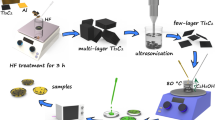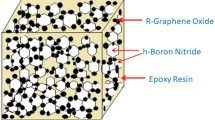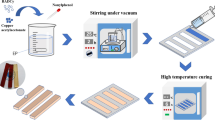Abstract
Heat conductive epoxy composites as electronic packaging materials present wider applications. However, the high loading of fillers required for a high thermal conductivity (k) inevitably degrades the electrical resistivity and breakdown strength (Eb) of epoxy composites, significantly limiting their urgent applications in high voltage fields. The key to tackling this dilemma is to improve the intrinsic k of pristine epoxy with inherently disordered structure. Liquid crystal epoxy (LCE) containing rod-shaped mesogenic units and flexible segments, emerges as a unique epoxy resin presenting inherently high-k realized via self-assembling the mesogens into ordered domains, represents a promising solution to this critical issue. In this work, two types of LCEs, i.e., BE and LCM6, were designed and synthesized, and their LC behaviors were investigated. Further, the thermal and electric properties of the 4,4-methylenedianiline cured BE/LCM6 were explored as a function of the LCM6 loading. The results reveal that the cured BE/LCM6 at an optimal ratio showcases the obviously elevated k and Eb along with low dielectric permittivity and loss, when compared with traditional epoxy and a single LCE component. The concurrent enhancement in both k and Eb is ascribed to the introduced ordered domains resulting from the self-assembled mesogens into the cured epoxy network, which pave the highway for phonon transport and impede the migration of charge carries. The prepared LCEs with high k and Eb show appealing application prospects in electrical power systems.












Similar content being viewed by others
Data Availability
Research data are not shared.
References
Evans AM, Giri A, Sangwan VK, Xun S, Bartnof M, Torres-Castanedo CG, Balch HB, Rahn MS, Bradshaw NP, Vitaku E, Burke DW, Li H, Bedzyk MJ, Wang F, Bredas J-L, Malen JA, McGaughey AJH, Hersam MC, Dichtel W, Hopkins R (2021) Thermally conductive ultra-low-k dielectric layers based on two-dimensional covalent organic frameworks. Nat Mater 20(8):1142–1148
Zhou W, Zhang Y, Wang J, He L, Xu W, Li B, Chen LQ, Wang Q (2020) Lightweight porous polystyrene with high thermal conductivity by constructing 3D interconnected network of boron nitride nanosheets. ACS Appl Mater Inter 12(41):46767–46778
Zhao L, Chen Z, Ren J, Yang L, Li Y, Wang Z, Ning W, Jia S (2022) Synchronously improved thermal conductivity and dielectric constant for epoxy composites by introducing functionalized silicon carbide nanoparticles and boron nitride microsphere. J Colloid Interf Sci 627:205–214
Zhao L, Wei C, Ren J, Li Y, Zheng J, Jia L, Wang Z, Jia S (2022) Biomimetic nacreous composite films toward multipurpose application structured by aramid nanofibers and edge-hydroxylated boron nitride nanosheets. Ind Eng Chem Res 61(25):8881–8894
Li Y, Liu C, Zhou W, Hou Z, Shi Q, Gong C, Wu Y (2021) Microscopic ordered structure compactness and intrinsic thermal conductivity improvement of dispersed liquid crystal films of flexible epoxy-thiol polymers. Mater Today Commun 29:102792
Li Y, Gong C, Li C, Li C, Ruan K, Liu C, Liu H, Gun J (2021) Liquid crystalline texture and hydrogen bond on the thermal conductivities of intrinsic thermal conductive polymer films. J Mater Sci Technol 82:250–256
Li Y, Pan P, Liu C, Zhou W, Li C, Gong C, Li H, Zhang L, Hui S (2020) Influence of chain interaction and ordered structures in polymer dispersed liquid crystalline membranes on thermal conductivity. J Polym Eng 40(7):573–581
Barzic AI, Hulubei C, Avadanei MI, Stoica L, Popovici D (2015) Polyimide precursor pattern induced by banded liquid crystal matrix: Effect of dianhydride moieties flexibility. J Mater 50:1358–1369
Chen J, Huang X, Zhu Y, Jiang P (2017) Cellulose nanofiber supported 3D interconnected BN nanosheets for epoxy nanocomposites with ultrahigh thermal management capability. Adv Funct Mater 27(5):1604754
Yang R, Chen L, Ruan C, Zhong HY, Wang YZ (2014) Chain folding in main-chain liquid crystalline polyesters: from π-π stacking toward shape memory. J Mater Chem C 2(30):6155–6164
Zhong X, Ruan K, Gu J (2022) Enhanced thermal conductivities of liquid crystal polyesters from controlled structure of molecular chains by introducing different dicarboxylic acid monomers. Research. https://doi.org/10.34133/2022/9805686
Zhang Q, Chen G, Wu K, Shi J, Liang L, Lu M (2020) Biphenyl liquid crystal epoxy containing flexible chain: synthesis and thermal properties. J Appl Polym Sci 137(38):49143
Aziz T, Haq F, Farid A, Cheng L, Chuah LF, Bokhari A, Mubashir M, Tang DYY, Show PL (2023) The epoxy resin system: function and role of curing agents. Carbon Lett. https://doi.org/10.1007/s42823-023-00547-7
Gu J, Ruan K (2021) Breaking through bottlenecks for thermally conductive polymer composites: a perspective for intrinsic thermal conductivity, interfacial thermal resistance and theoretics. Nanomicro Lett 13:1–9
Qian X, Zhou J, Chen G (2021) Phonon-engineered extreme thermal conductivity materials. Nat Mater 20(9):1188–1202
Ruan K, Guo Y, Lu C, Shi X, Ma T, Zhang Y, Kong J, Gu J (2021) Significant reduction of interfacial thermal resistance and phonon scattering in graphene/polyimide thermally conductive composite films for thermal management. Research. https://doi.org/10.34133/2021/8438614
Tang L, He M, Na X, Guan X, Zhang R, Zhang J, Gu J (2019) Functionalized glass fibers cloth/spherical BN fillers/epoxy laminated composites with excellent thermal conductivities and electrical insulation properties. Compos Commun 16:5–10
Ou X, Chen S, Lu X, Lu Q (2021) Enhancement of thermal conductivity and dimensional stability of polyimide/boron nitride films through mechanochemistry. Compos Commun 23:100549
Tang J, Feng Y, Feng W (2021) Photothermal storage and controllable release of a phase-change azobenzene/aluminum nitride aerogel composite. Compos Commun 23:100575
Yang X, Zhong X, Zhang J, Gu J (2021) Intrinsic high thermal conductive liquid crystal epoxy film simultaneously combining with excellent intrinsic self-healing performance. J Mater Sci Technol 68:209–215
Zhao L, Wei C, Li Z, Wei W, Jia L, Huang X, Ning W, Wang Z, Ren J (2021) High-temperature dielectric paper with high thermal conductivity and mechanical strength by engineering the aramid nanofibers and boron nitride nanotubes. Mater Des 210:110124
Ren J, Jiang G, Wang Z, Qing Q, Teng F, Jia Z, Wu G, Jia S (2024) Highly thermoconductive and mechanically robust boron nitride/aramid composite dielectric films from non-covalent interfacial engineering. Adv Compos Hybrid Ma 7(1):5
Jeong I, Kim CB, Kang DG, Jeong KU, Jang SG, You NH, Ahn S, Lee DS, Goh M (2019) Liquid crystalline epoxy resin with improved thermal conductivity by intermolecular dipole-dipole interactions. J Polym Sci Polym Chem 57(6):708–715
Wang Y, Zhou W, Cao D, Li T, Cao G, Zhang X (2022) Progress in intrinsically thermal conductive liquid crystalline epoxy and composites. Acta Materiae Compositae Sinica 39(5):2060–2072
Zhou W, Wang Y, Cao G, Cao D, Li T, Zhang X (2021) Progress in intrinsic thermally conductive polymers. Acta Materiae Compositae Sinica 38(7):2038–2055
Zhou W, Wang F, Yang Y, Wang Y, Zhao Y, Zhang L (2023) Research on intrinsically thermal conductive polymers. Heat Conduction Mechanism, Structure & Performances and Applications. Prog Chem 35(7):1106–1122. https://doi.org/10.7536/PC221102
Zhou W, Yao T, Yuan M, Yang Y, Zheng J, Liu J (2023) Research progress of intrinsic polymer dielectrics with high thermal conductivity. IET Nanodielectr 4(6):165–181. https://doi.org/10.1049/ned2.12052
Zhou W, Wang Kong F, Peng W, Wang Y, Yuan M, Han X, Liu X, Li B (2023) Advances in liquid crystal epoxy: molecular structures, thermal conductivity, and promising applications in thermal management. Energy Environ Mater. https://doi.org/10.1002/eem2.12698
Ruan K, Shi X, Guo Y, Gu J (2020) Interfacial thermal resistance in thermally conductive polymer composites: a review. Compos Commun 22:100518
Guo H, Lu M, Liang L, Wu K, Ma D, Xue W (2017) Liquid crystalline epoxies with lateral substituents showing a low dielectric constant and high thermal conductivity. J Electron Mater 46:982–991
Zeng X, Ye L, Guo K, Sun R, Xu J, Wong C (2016) Fibrous epoxy substrate with high Thermal Conductivity and Low Dielectric Property for Flexible Electronics. Adv Electron Mater 2(5):1500485
Harada M, Hamaura N, Ochi M, Agari Y (2013) Thermal conductivity of liquid crystalline epoxy/BN filler composites having ordered network structure. Compos B Eng 55:306–313
Lin YS, Hsu SL, Ho TH, Cheng SS, Hsiao YH (2016) Synthesis, characterization, and thermomechanical properties of liquid crystalline epoxy resin containing ketone Mesogen. Polym Eng Sci 57:424–431
Tang L, Zhang J, Gu J (2021) Random copolymer membrane coated PBO fibers with significantly improved interfacial adhesion for PBO fibers/cyanate ester composites. CJA 34(2):659–668
Gao B, Zhang J, Hao Z, Huo L, Zhang R, Shao L (2017) In-situ modification of carbon fibers with hyperbranched polyglycerol via anionic ring-opening polymerization for use in high-performance composites. Carbon 123:548–557
Li Y, Li C, Zhang L, Zhou W (2019) Zhang L Effect of microscopic-ordered structures on intrinsic thermal conductivity of liquid-crystalline polysiloxane. J Mater Sci-Mater El 30:8329–8338
Dang J, Zhang J, Li M, Dang L, Gu J (2022) Enhancing intrinsic thermal conductivities of epoxy resins by introducing biphenyl mesogen-containing liquid crystalline co-curing agents. Polym Chem 13(42):6046–6053
Kou Y, Zhou W, Li B, Dong L, Duan Y-E, Hou Q, Liu X, Cai H, Chen Q, Dang Z-M (2018) Enhanced mechanical and dielectric properties of an epoxy resin modified with hydroxyl-terminated polybutadiene. Compos Part Appl Sci Manuf 114:97–106
Dong L, Zhou W, Sui X, Wang Z, Cai H, Wu P, Zuo J, Liu X (2016) A carboxyl-terminated polybutadiene liquid rubber modified epoxy resin with enhanced toughness and excellent electrical properties. J Electron Mater 45:3776–3785
Zhu Z, Sun X, Yuan H, Song C, Cao Y, Li X (2018) Determination of gel time and gel point of epoxy-amine thermosets by in-situ near infrared spectroscopy. Polym Test 72:416–422
Wang Z, Hou G, Xie J, Zhang Z, Zhang X, Cai J (2023) Degradable bio-based fluorinated epoxy resin with excellent flame-retardant, dielectric, hydrophobic, and mechanical properties. Adv Compos Hybrid Ma 6(4):1–15
Lin N, Yin R, Zhou W, Zhang M, Kong F, Gong M, Lei X, Cao Z, Di-wu J, Li W, Zhao Y (2023) Investigation into ameliorative dielectric properties of silicon/poly (vinylidene fluoride) composites by engineering insulating aluminum oxide shell as an interlayer. J Appl Polym Sci 140(40):1–16
Fan X, Liu Z, Wang S, Gu J (2023) Low dielectric constant and highly intrinsic thermal conductivity fluorine-containing epoxy resins with ordered liquid crystal structures. SusMat. https://doi.org/10.1002/sus2.172
Yao T, Zhou W, Cao G, Peng W, Liu J, Dong X, Chen X, Zhang Y, Chen Y, Yuan M (2023) Engineering of core@double-shell structured Zn@ZnO@PS particles in PVDF composites towards significantly enhanced dielectric performances. J Appl Polym Sci 140(17):e53772
Zhou W, Cao G, Yuan M, Zhong S, Wang Y, Liu X, Cao D, Peng W, Liu J, Wang G, Dang Z, Li B (2023) Core-shell engineering of conductive fillers toward enhanced dielectric properties: a universal polarization mechanism in polymer conductor composites. Adv Mater 35(2):2207829
Zhang Y, Zhou W, Peng W, Yao T, Zhang Y, Wang B, Cai H, Li B (2023) Core@double-shell engineering of Zn particles towards elevated dielectric properties: multiple polarization mechanisms in Zn@Znch@PS/PVDF composites. Macromol Rapid Comm. https://doi.org/10.1002/marc.202300585
He P, Ma W, Xu J, Wang Y, Cui Z, Wei J, Zuo P, Liu X, Zhuang Q (2023) Hierarchical and orderly surface Conductive Networks in Yolk-Shell Fe3O4@C@Co/N-Doped C microspheres for enhanced microwave absorption. Small 19(40):2302961
Zuo P, Jiang J, Chen D, Lin J, Zhao Z, Sun B, Zhuang Q (2023) Enhanced interfacial and dielectric performance for polyetherimide nanocomposites through tailoring shell polarities. ACS Appl Mater Inter 15(19):23792–23803
Acknowledgements
The authors gratefully acknowledge the financial support from the National Natural Science Foundation of China (Nos. 52277028, 22205180), the Special Project for Local Service of Education Department of Shaanxi Provincial Government (22JC052), Priority Research and Development Foundations of Xianyang City Government (2021ZDYF-GY-0026), and the Analytic Instrumentation Center of XUST.
Author information
Authors and Affiliations
Contributions
Jingyu Di-wu: Data curation, Formal analysis, Methodology, Writing – original draft. Wenying Zhou: Conceptualization, Funding acquisition, Supervision, Writing – review and editing. Yun Wang: Data curation. Ying Li: Conceptualization. Yajuan Lv: Visualization. Yanqing Zhang: Methodology, Visualization. Nan Zhang: Data curation. Qingguo Chen: Funding acquisition, Supervision.
Corresponding authors
Ethics declarations
Conflict of interests
The authors declare no conflict of interests.
Additional information
Publisher’s Note
Springer Nature remains neutral with regard to jurisdictional claims in published maps and institutional affiliations.
Rights and permissions
Springer Nature or its licensor (e.g. a society or other partner) holds exclusive rights to this article under a publishing agreement with the author(s) or other rightsholder(s); author self-archiving of the accepted manuscript version of this article is solely governed by the terms of such publishing agreement and applicable law.
About this article
Cite this article
Di-wu, J., Zhou, W., Wang, Y. et al. Synergetic improvements of intrinsic thermal conductivity and breakdown strength in liquid crystal epoxy resin for high voltage applications. J Polym Res 31, 72 (2024). https://doi.org/10.1007/s10965-024-03919-3
Received:
Accepted:
Published:
DOI: https://doi.org/10.1007/s10965-024-03919-3




